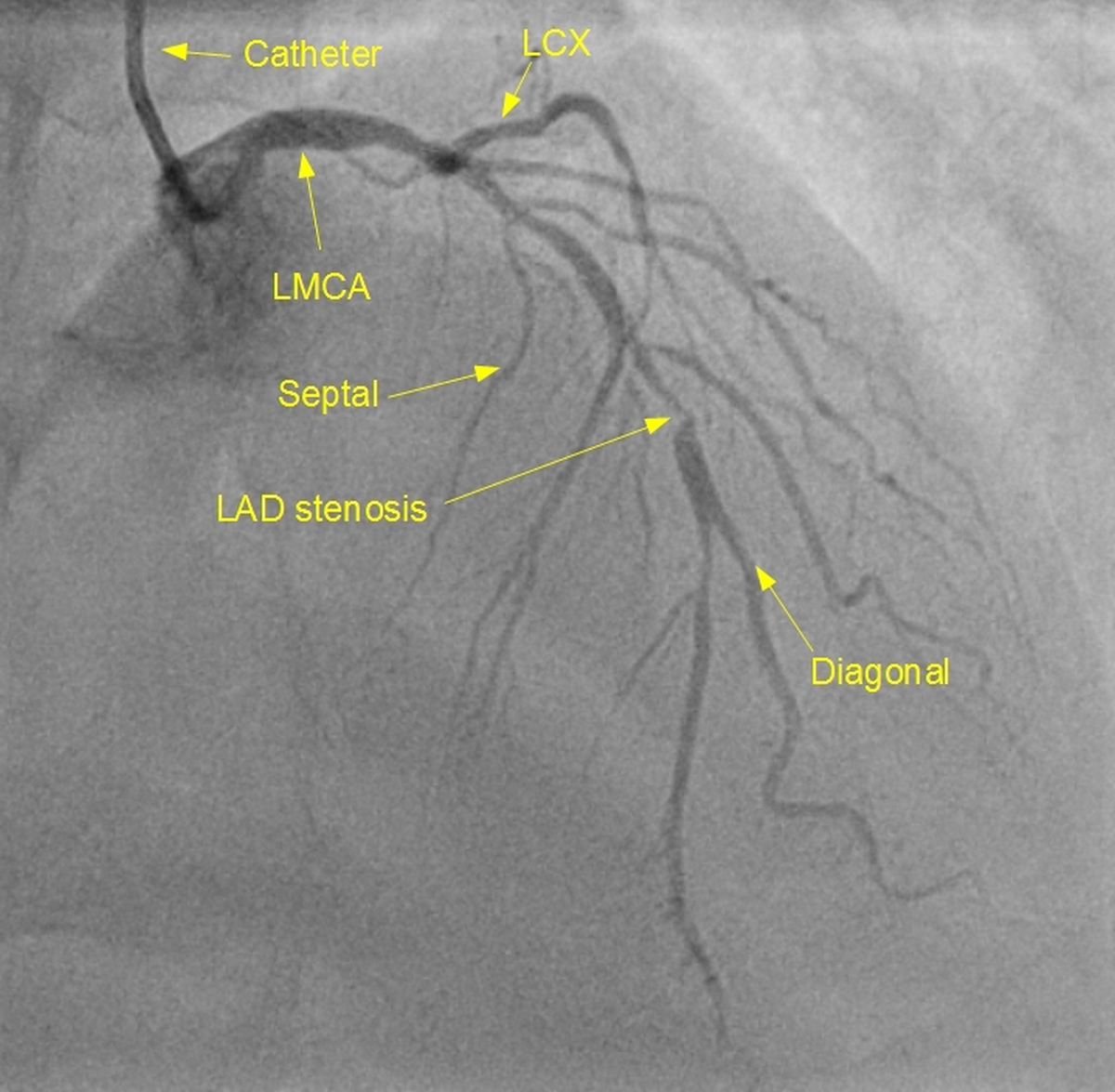LAD Stenosis – Left coronary angiogram
LAD Stenosis – Left coronary angiogram
 Left coronary angiogram showing tight stenosis of distal left anterior descending coronary artery just prior to its bifurcation into a terminal diagonal. There is mild stenosis of parent LAD in both distal and proximal regions. Multiple septal and diagonal branches are seen originating from the LAD, which appears to be a type 2 vessel reaching up to the apex, though the distal most part is not very clear in this image. A small diagonal and a septal arising at the proximal end of the stenotic LAD segment have ostial stenosis.
Left coronary angiogram showing tight stenosis of distal left anterior descending coronary artery just prior to its bifurcation into a terminal diagonal. There is mild stenosis of parent LAD in both distal and proximal regions. Multiple septal and diagonal branches are seen originating from the LAD, which appears to be a type 2 vessel reaching up to the apex, though the distal most part is not very clear in this image. A small diagonal and a septal arising at the proximal end of the stenotic LAD segment have ostial stenosis.
Transradial catheter is seen at the upper end of the image. Left main coronary artery shows distal tapering, prior to its division into LAD and left circumflex coronary arteries. LCX also shows stenoses in its distal part, though this is a foreshortened view for LCX. There is mild stenosis of the distal left anterior descending coronary artery after the origin of the terminal diagonal.
Terminal diagonal and distal LAD beyond the bifurcation are almost of the same size. Terminal diagonal is free of significant disease. Transradial catheter used in this case was a tiger catheter. Same Tiger catheter can be used for both right and left coronary angiography, thus avoiding a catheter exchange and a potential risk of radial artery spasm.
Analysis of a dual center registry of 1412 cases done by experienced transradial operators showed that Tiger catheter employed as a singe catheter is effective in achieving a lower contrast volume and fluoroscopy time at low complication rate [1]. Unstable catheter engagement in that study was noted predominantly for left coronary artery, but its overall frequency was similar for both Tiger and Judkins catheter.
Reference
- Langer C, Riehle J, Wuttig H, Dürrwald S, Lange H, Samol A, Frey N, Wiemer M. Efficacy of a one-catheter concept for transradial coronary angiography. PLoS One. 2018 Jan 2;13(1):e0189899.



